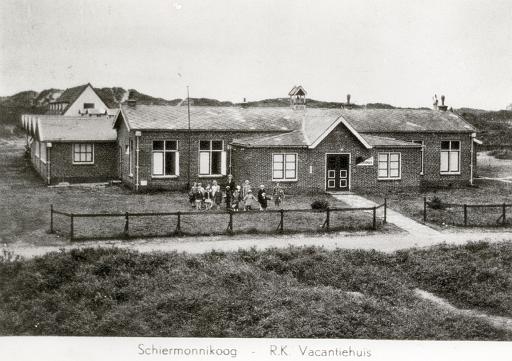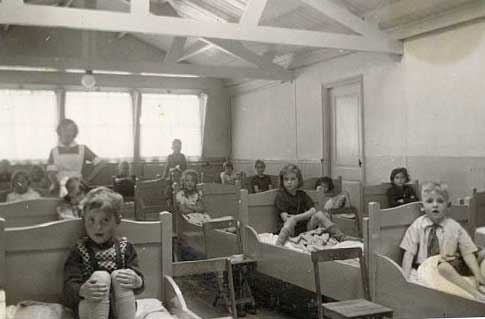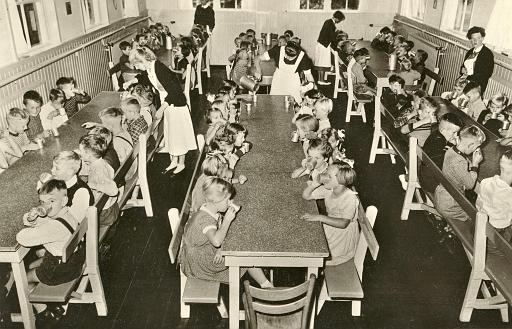1922 - 1940
In 1922 the building was first named after Saint Egbert by the Catholic Church. The building served as a getaway for children from large cities, who lived in working-class neighborhoods and had poor health.
The children (so-called Bleekneusjes, which translates to “pale noses”) went through six weeks of discipline, rest, structure, sun, and sea. However, for many children the stay was a traumatic experience, being away from home and their safe environment. Homesickness often played a major role. Until 1940, It Aude Kolonyhûs functioned as a getaway for approximately 45 children.
1960 – 1967
From the 1960s, the methodologies changed and fewer children were going to the Kolonyhûs. At this time more attention was paid to the psychological aspects of parenting, instead of focussing on the medical side. Increased prosperity, better housing, and better food and facilities made such getaways for children redundant. In 1967 the Kolonyhûs was closed and the building was converted into a hotel named Egbertsduin.
1998
The St. Egbert health resort was expanded in 1998. A new building was built on the south side next to the current building (which is now the Strand Resort). In the new building a broader initiative was started to host both German and Dutch guests. As a result, the old building became obsolete. The original building was renovated and set up as a cabinet of curiosities (Rariteitenkabinet) called “Gribus”.




